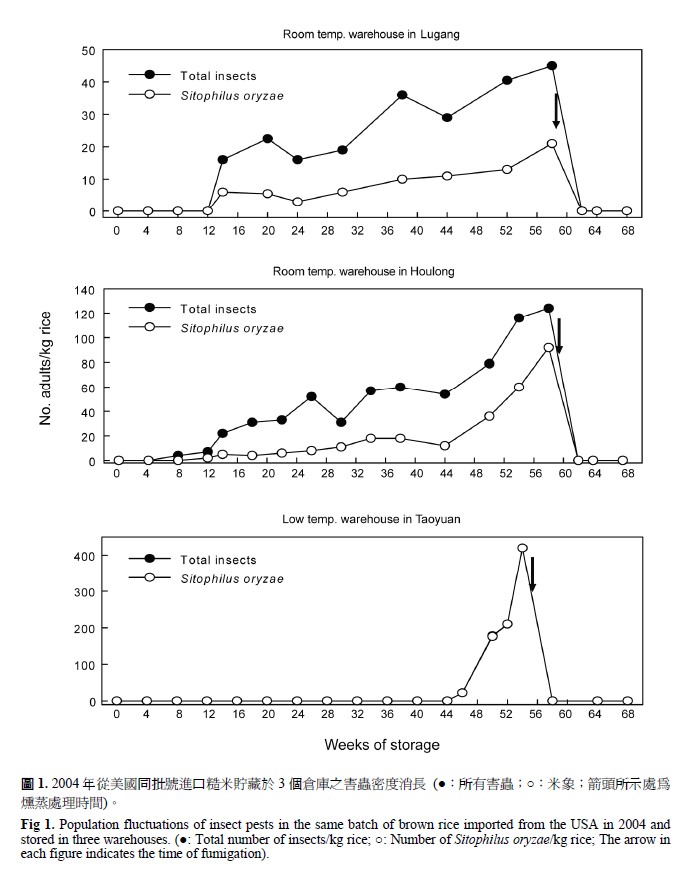All issues

Author:Me-Chi Yao, Chi-Yang Lee, and Kuang-Hui Lu*
Abstract:
After joining the World Trade Organization (WTO) in 2002, there is a significant increase in import of rice in Taiwan. As a result, monitoring foreign species of rice pests have become important strategies for management of imported rice. A survey program was conducted during 2003–2006 to inspect every shipment of rice to Taiwan for pests and monitor some warehouses for outbreaks of pests of rice in storage. Live insects and/or mites were found in 12% of the 117 samples of rice but none of them were listed as quarantine pests in Taiwan. Sitophilus oryzae (L.) was the predominant species among these pests. For rice samples stored in warehouse, 11 species of insects and one species of mite were found. For brown rice stored at room temperature (18–34℃) for 13 weeks, the number of insects was below 10 insects per kilogram of rice but it increased to 35 insects per kilogram of rice after stored for 26 weeks. The major pests in the rice samples were Sitophilus oryzae (L), Tribolium castaneum (Herbst), Ahasverus advena (Waltl), Cryptolestes pusillus (Schoherr), Cadra cautella (Walker), Liposcelis divinatorius (Müller), and Tyrophagus putrescentiae (Schrank). Pests in low temperature warehouses (15–18℃) did not occurred until 26 weeks of storage, and the major pests were Sitophilus oryzae (L), and Tyrophagus putrescentiae (Schrank). For rice samples stored at low temperature, insect pest appeared after storage for 26 weeks with Sitophilus oryzae and Tyrophagus putrescentiae as predominant species. However, a breakdown of cooling systems often resulted in severe outbreaks of pests for rice stored at low temperature warehouses and the level of pest infestation was even higher than the rice samples stored at room temperature. Aluminum phosphide was an effective fumigant for control of pests of rice stored at low or room temperature. A monthly survey program initiated in 2005 was used to monitor insect pests on imported rice stored at low temperature and room temperature warehouses. This program provided crucial information on infestation and control of pests in rice stored in warehouses of normal or low temperature. This monitoring program would be an effective plant quarantine strategy preventing importation of pests in imported rice.
Key words:Imported rice, Quarantine pests, Sitophilus oryzae, Cadra cautella, Tyrophagus putrescentiae
Download:![]() PDF Links
PDF Links
- 1. Development of Tractor-Mounted Seedling Transplanter for Sweet Potato
- 2. Synergistic Effect of Additional Gas on the Toxicity of Phosphine to Sitophilus oryzae and Sitophilus zeamais (Coleoptera: Dryophthoridae)
- 3. Effects of Temperature and Solar Radiation on Growth Traits and Plant Elements in Purple Leafy Sweet Potato
 Submit your manuscript
Submit your manuscript
 Guide for authors
Guide for authors